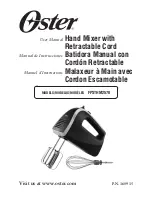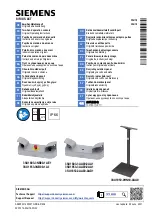
•
Do not remove or manipulate the
safety mechanisms of the power tool.
•
Do not make modifications to the
power tool or to parts of the device.
•
Only put down the power tool when
it has been switched off and is at a
standstill.
•
Separate the power tool from the
power supply when it is not in use.
Power tool use and care
•
Do not overload the device. Use
the appropriate power tool for the
task in hand.
The correct power
tool will do the job better and safer
in the power range for which it was
designed.
•
Do not use a power tool if the
switch is defective.
Any power tool
that cannot be controlled with the
switch is dangerous and must be
repaired.
•
Disconnect the plug from the
power source and/or remove
the rechargeable battery before
making any adjustments, changing
accessories, or storing the device.
Such preventive safety measures
reduce the risk of starting the power
tool accidentally.
•
Keep power tools that are not
in use stored out of the reach of
children. Do not allow persons to
operate the device who are not
familiar with it, or who have not
read these instructions.
Power
tools are dangerous in the hands of
untrained users.
•
Treat your power tools with care.
Check for proper functioning of
moving parts and that they do not
jam, breakage of parts and any
other damage that may affect the
power tools operation. If damaged,
have the power tool repaired before
use. Have any damaged parts
repaired before using the device.
Many accidents are caused by poorly
maintained power tools.
•
Keep cutting tools sharp and clean.
Properly maintained cutting tools with
sharp cutting edges are less likely to
jam and are easier to control.
•
Use the power tool, accessories
and other tools etc., in accordance
with these instructions. Take
account of the working conditions
and the task to be carried out.
Use
of the power tool for purposes for
which it was not intended may result
in a hazardous situation.
•
If you notice anything unusual:
Switch the device off. Separate the
device from the power supply. Have
the device checked by authorised
specialist personnel.
Examples of
unusual behaviour include: Noises,
smells, vibrations etc.
Safety notes for stirrers for
construction materials
•
Wear ear defenders when using a
stirrer for construction materials.
The effects of noise may lead to loss of
hearing.
•
Use additional handles if supplied
with the tool.
Loss of control may lead
to injuries.
49
5451920-Ruehrwerk_man.indd 49
17.10.19 09:46
















































